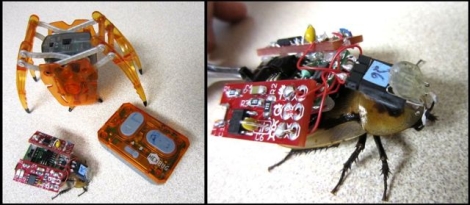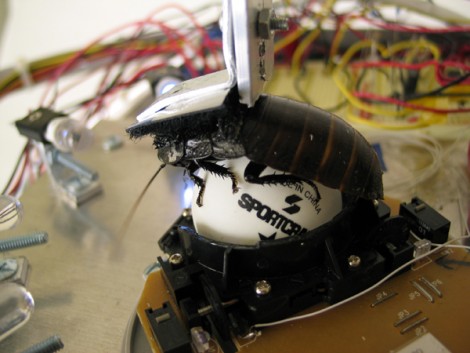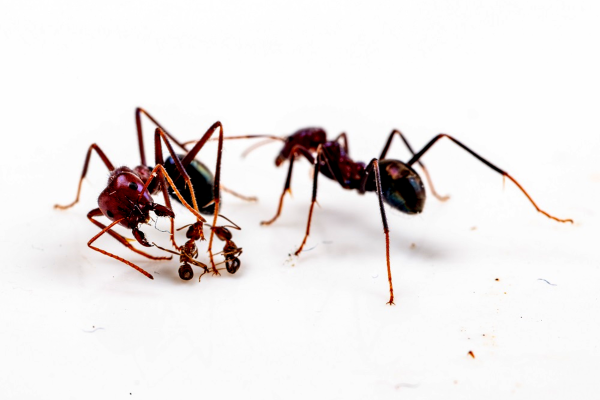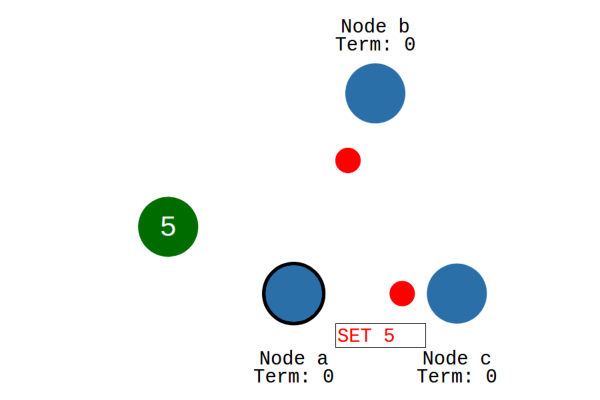
Given a box full of cockroaches, the first thing most of us would do is try to locate the nearest source of fire. Lucky for the roaches, the team over at Backyard Brains look at things a bit differently than we do.
Their latest effort combines cockroaches and electronics to create a bio-electrical hybrid known as the RoboRoach. Using control circuitry donated from a HexBug inchworm and some 555 timers to create properly timed pulses, they have been able to control the gross movement of cockroaches. Stimulation is directly delivered to the antennae nerves of the cockroaches, enabling them to tell the roach which direction to turn and when.
Currently there are some ahem, bugs in the system, which they are working diligently to resolve. Only about 25% of the roaches they wire up can be controlled at present. Once that ratio improves however, they will be looking to offer RoboRoach as a beta product. If you are aiming to add a beetle air force to supplement your remote-controlled cockroach army, be sure to check this out.
Continue reading to see a video of the RoboRoach in action.
Continue reading “Coming Soon To A Store Near You: Remote-control Cockroaches”

















